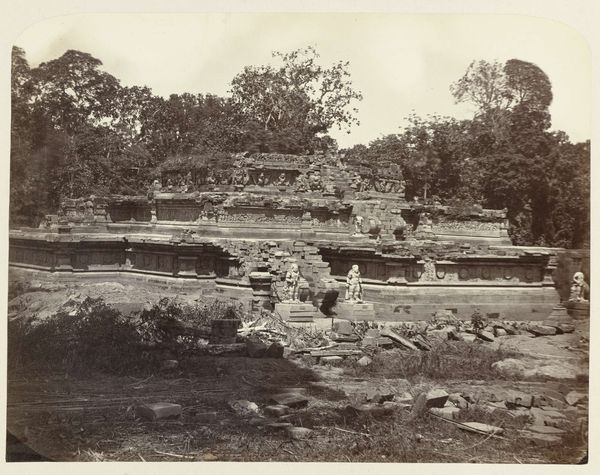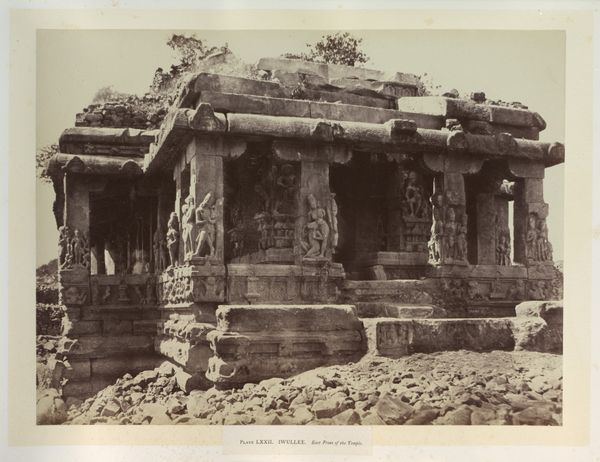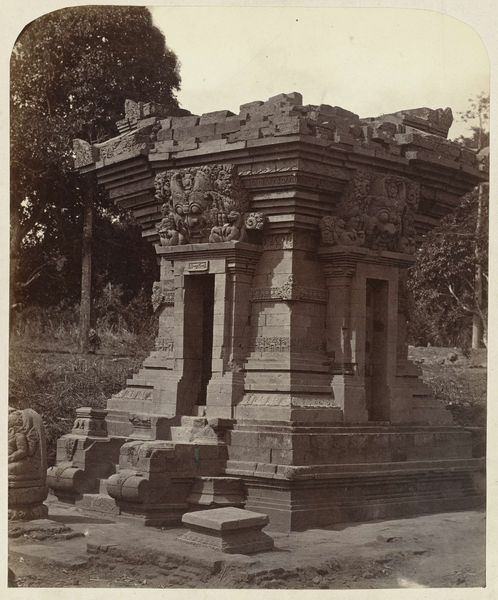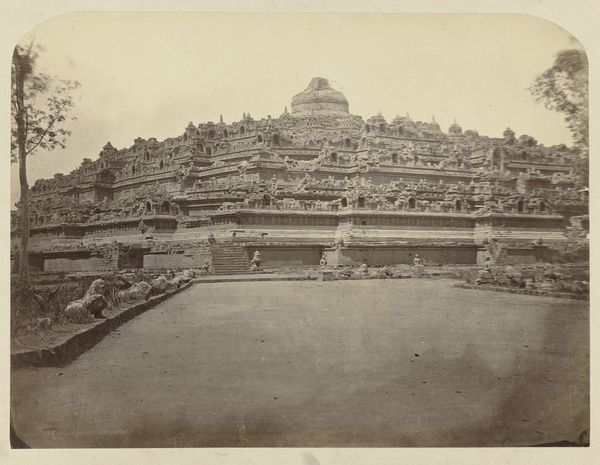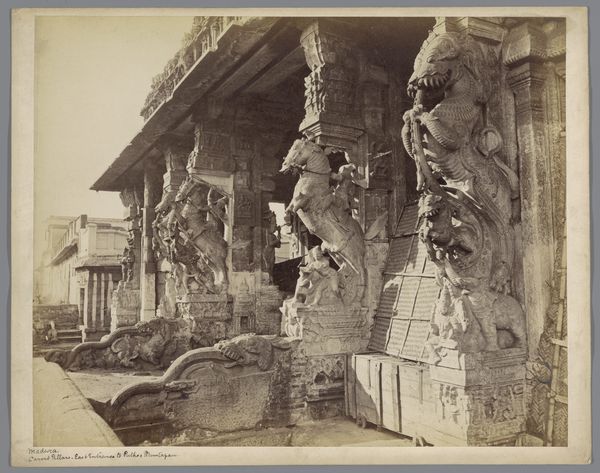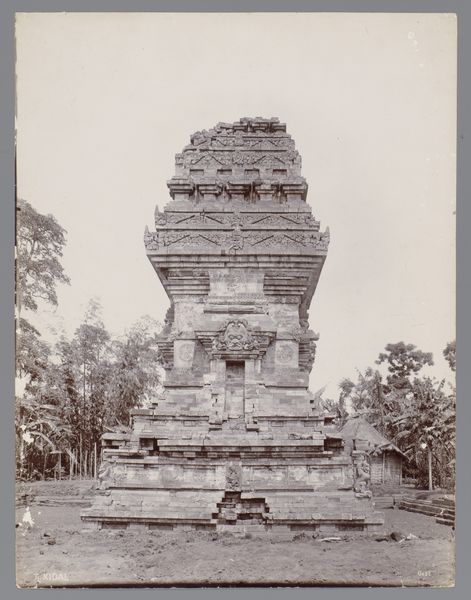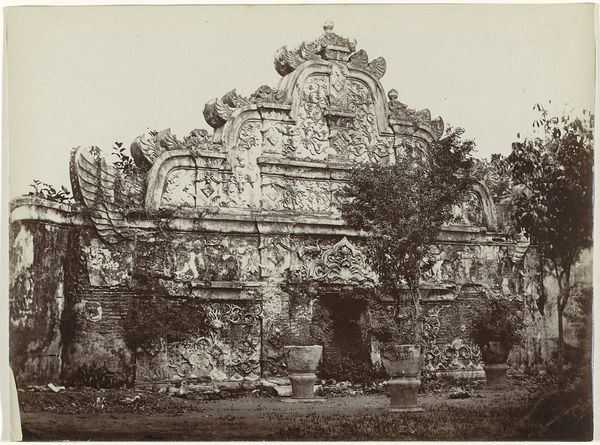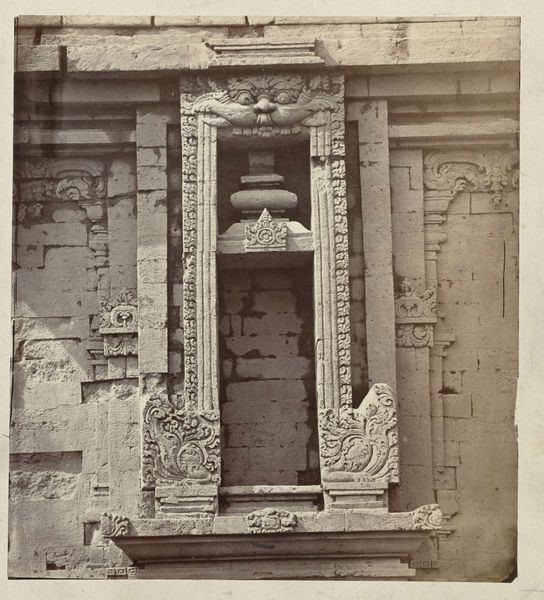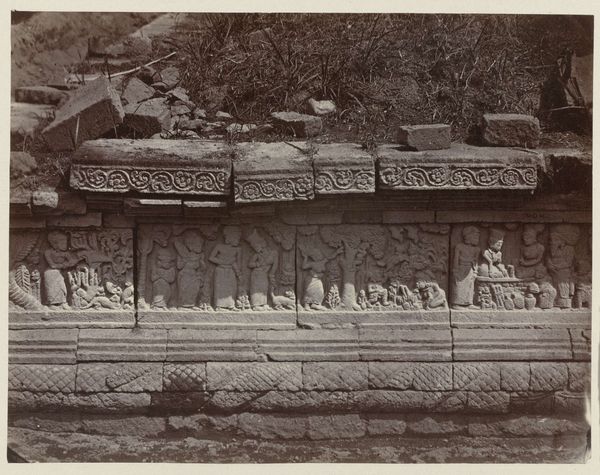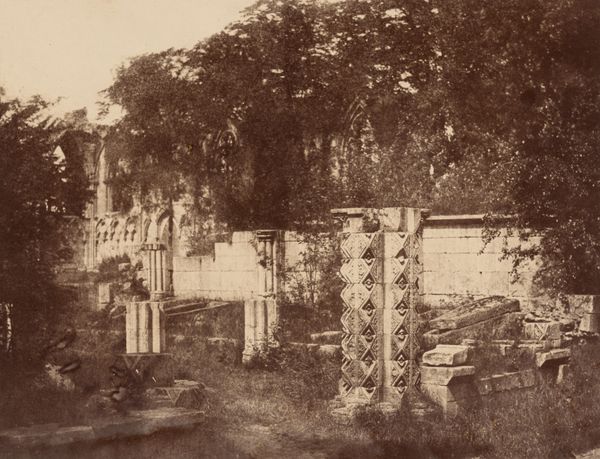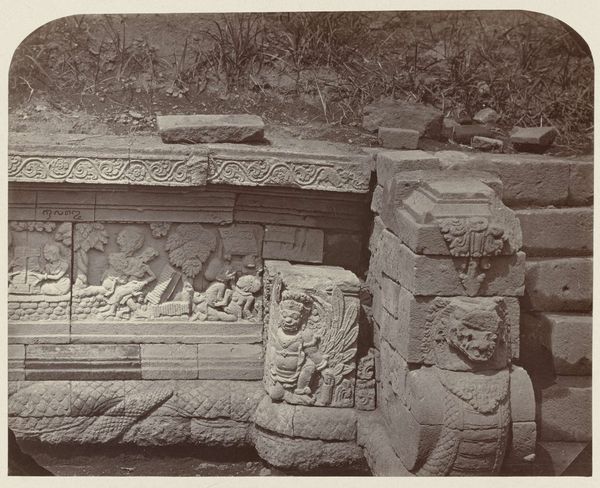
Het bovenste gedeelte van Candi Panataran en de trap gezien vanaf de westzijde. Possibly 1867
0:00
0:00
print, photography
# print
#
landscape
#
archive photography
#
historic architecture
#
traditional architecture
#
photography
#
historical photography
#
ancient-mediterranean
#
19th century
Dimensions: height 290 mm, width 340 mm
Copyright: Rijks Museum: Open Domain
Isidore Kinsbergen captured in a photograph the upper part of Candi Panataran and its staircase from the west side. Notice the carved friezes displaying scenes filled with figures and symbols. Circular motifs enclose narratives, reminiscent of ancient cosmological diagrams, depicting tales central to the culture. Each figure, each gesture, carries a weight of tradition. Think of these symbols as cultural memory triggers, reactivating stories of gods, heroes, and moral lessons. Look closely, can you see the recurring images of divine beings intertwined with earthly creatures? The very same combination of elements can be found in classical Greek art, where gods and mortals interact on the pediments of temples. Such motifs transcend geographical boundaries, revealing a universal human impulse to bridge the divine and mortal realms through art. Consider the emotional impact. Through these recurring motifs and archetypal figures, the subconscious mind comes alive with memories, dreams, and longings. The human psyche projects its innermost dramas onto these age-old narratives, turning the artwork into a mirror of the soul. These symbols are not static; they evolve, resurface, and take on new meanings, ensuring their eternal presence.
Comments
No comments
Be the first to comment and join the conversation on the ultimate creative platform.
